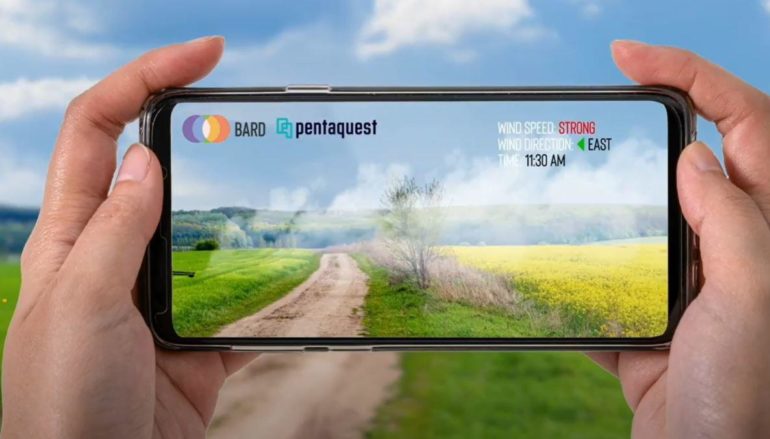While pesticide spraying protects crops against pests, weeds, and diseases, it can also be harmful to neighbouring crops and wildlife.
This unwanted movement of pesticides, known as spray drift, however, could potentially be trackable, thanks to a project developed between Monash University’s Faculty of Information Technology, Bard AI, PentaQuest, and AgriSci.
The project combines an artificial intelligence model and augmented reality to enable farmers to see a real-time visual representation of the possible spray drift on their phones. The presentation also allows farmers to view the impact the spray drift could have on neighbouring crops if spraying were to occur during poor conditions, such as when there are strong wind speeds.
Farmers are also able use to the system to understand “what if” scenarios to improve their spray plan and understand the potential impact of spray drift.
“Information alone does not change behaviour and the use of advanced technology doesn’t ensure the adoption of new platforms by farmers. By incorporating game-like design applications which drive better training and engagement outcomes, together with AI-driven decision support modelling, we’re able to deliver continuous adoption and accurate decision support that informs farmers appropriately,” Monash University Faculty of IT interim dean Ann Nicholson said.
Bard AI founder Ross Pearson said the solution has initially been developed to focus on spray drift for large acres but believes it could be used for other applications.
“Our solution combines leading-edge thinking and technology in behavioural science and probabilistic modelling to deliver an engaging experience for farmers that supports them through better decision-making,” he said.
In March, Australian agtech firm Agerris rolled outs its “drone on wheels” robot onto the Victorian-based SuniTAFE Smart Farm to support the farm’s operations and train technical staff on-site.
The Digital Farmhand was developed to help farmers improve crop yield, pest and weed detection, as well as reduce the need for pesticides.
Each mobile roving robot runs on solar energy and features navigation sensors, laser sensors, infrared sensors, cameras. It also has an artificial intelligence system that can create weed heat maps, as well as detect each individual crop and determine its yield estimation, plant size, and fruit and flowering count.
RELATED COVERAGE
Inquiry says technology could boost the value of Australia’s agriculture sector by AU$20b
The House of Representatives Standing Committee on Agriculture and Water Resources also put forward 13 recommendations.
Australia’s report on agtech confirms technology can lead to a fertile future
Sensors, robotics, AI, and blockchain are outlined as some of the future technologies that can improve the sector’s advancement.
CSIRO using artificial intelligence to map 1.7m Australian grain paddocks
It developed ePaddocks for the agriculture sector to better understand the boundaries of grain paddocks across the country.
The Yield scores AU$11 million in funding from Yamaha Motor Ventures
The company’s major shareholder Bosch Group has also converted its existing loan into equity.



